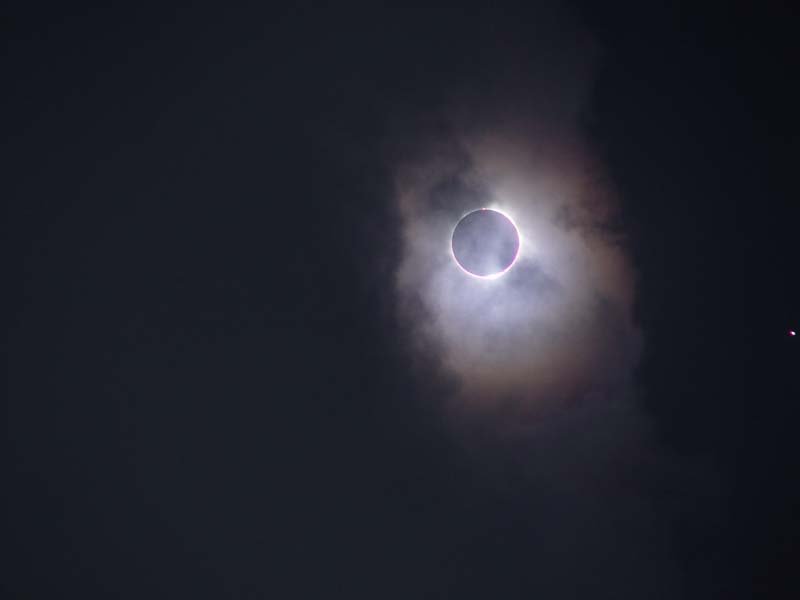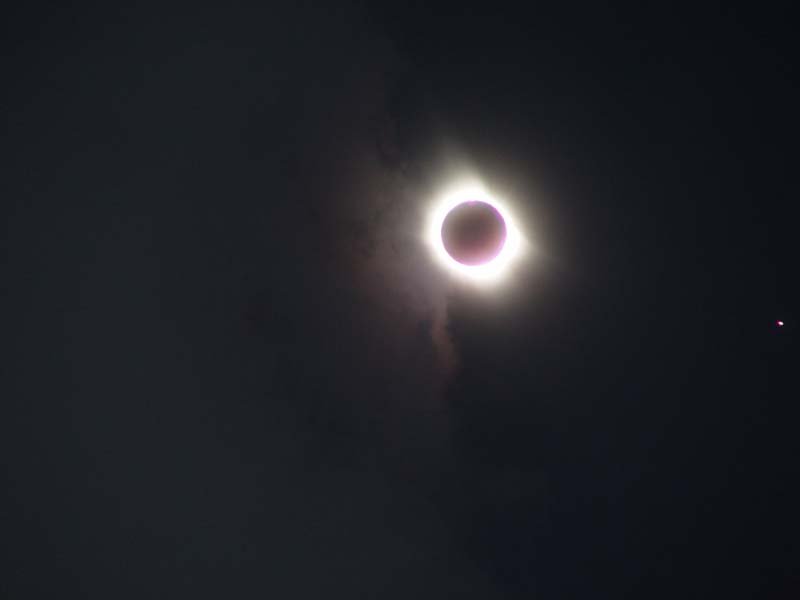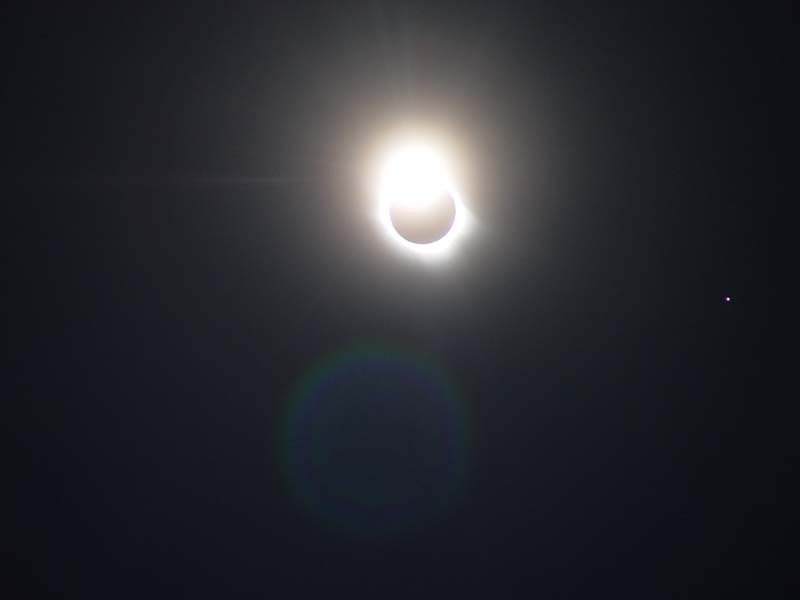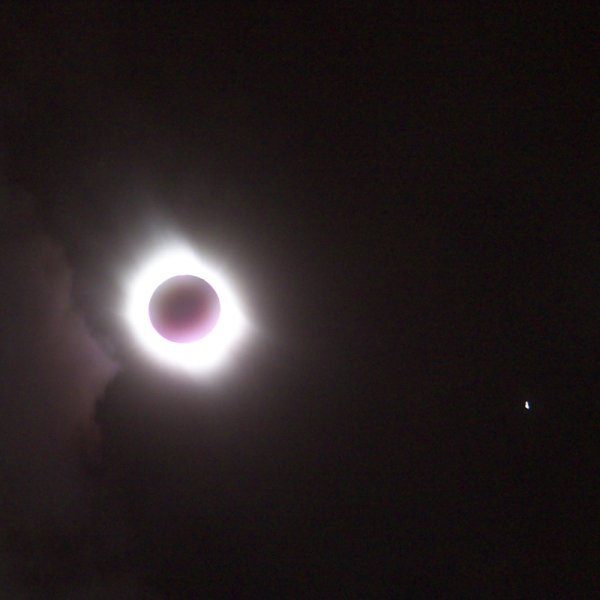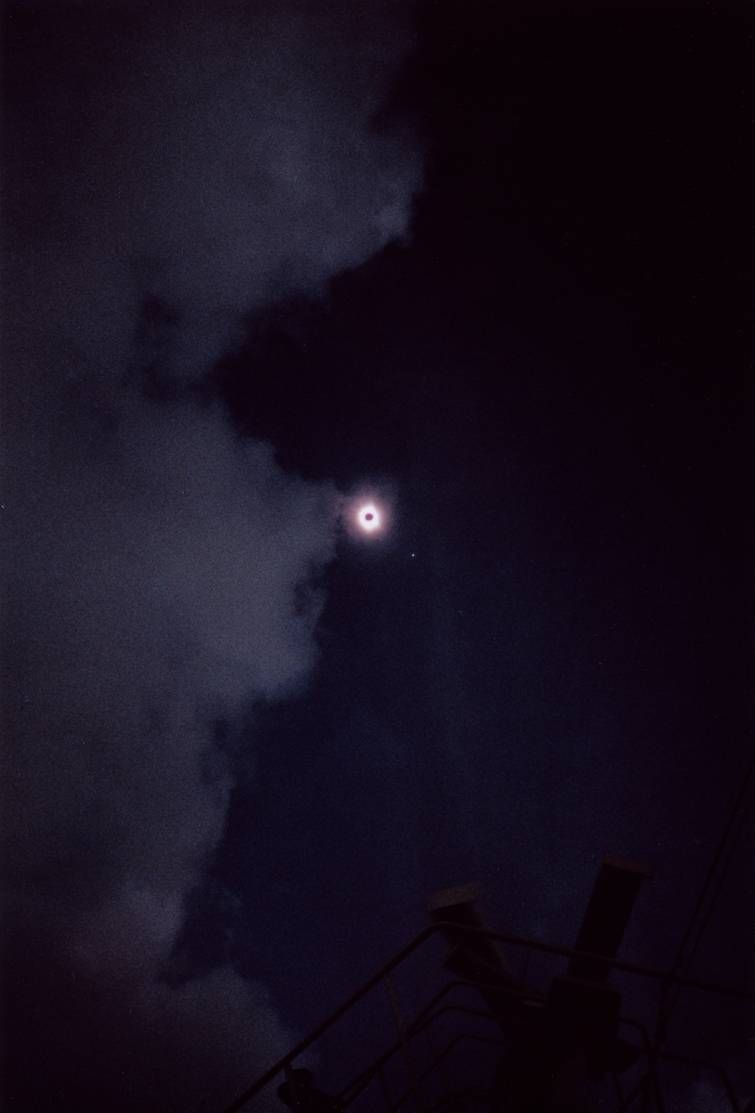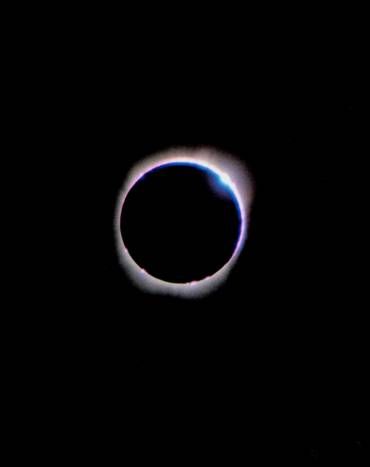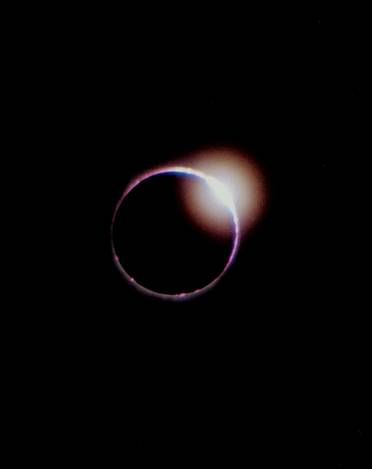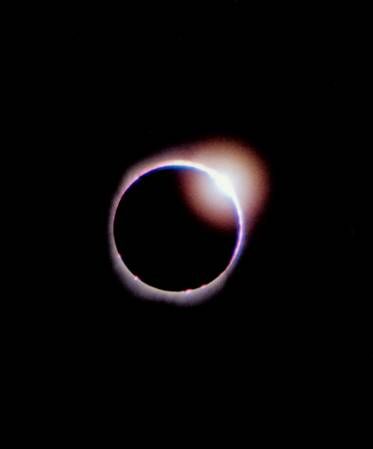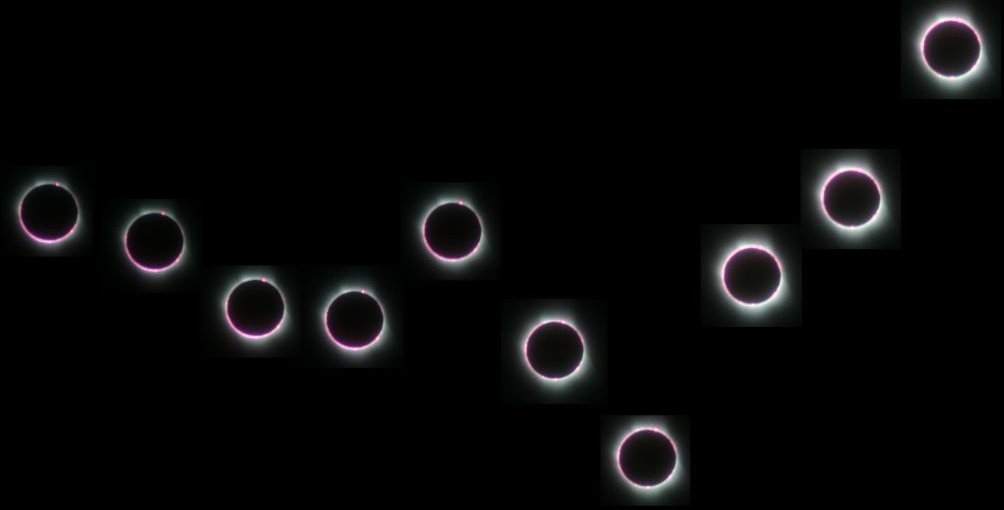Immediately prior to totality the clouds were getting thicker.
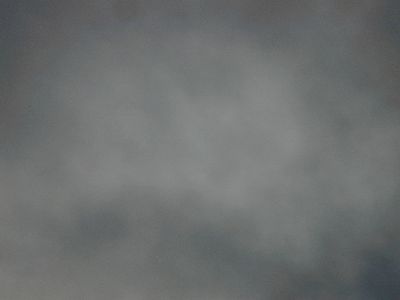
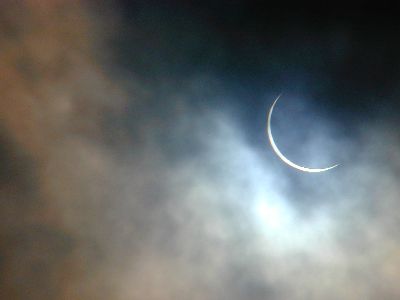
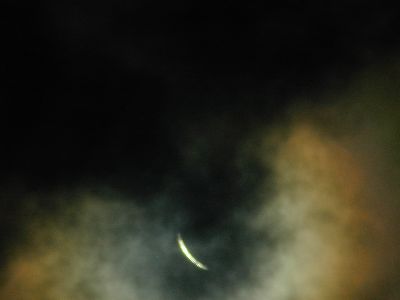
But the ship's captain managed to find a break in the clouds just as
totality began. And this is what we saw.
The ship's pitch and roll put the first at the edge of its
frame.
My camera was oriented so that all of my pictures are rotated about 45
degrees clockwise from those taken by others.
As the sun emerges from behind the moon a Diamond Ring
appears.
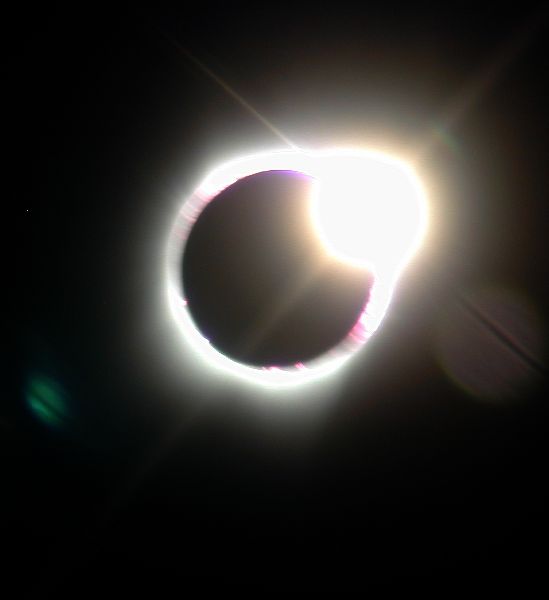
A moment later the diamond brightens but you can still see the red
solar prominences and just a bit of the corona extending beyond the
edge of the moon.
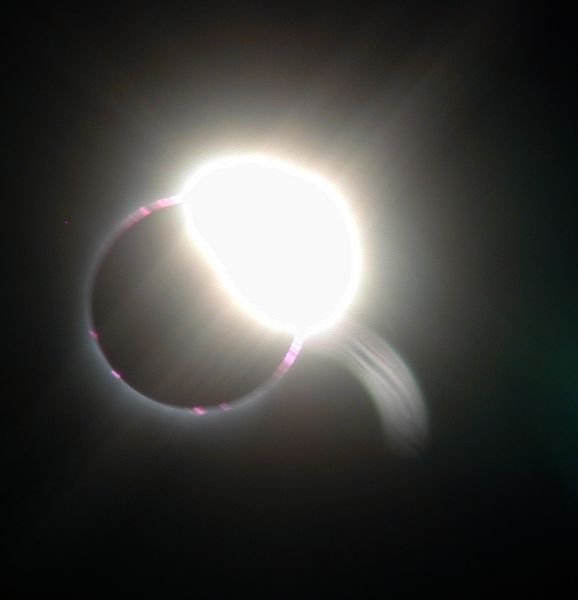
The extreme range in brightness in these last 2 pictures produced some
artifacts in the camera.
These pictures were taken
with a Nikon
D100 and a Nikkor 70-200 VR lens set to 200mm. Check out his
web site
for more
astronomical pictures.
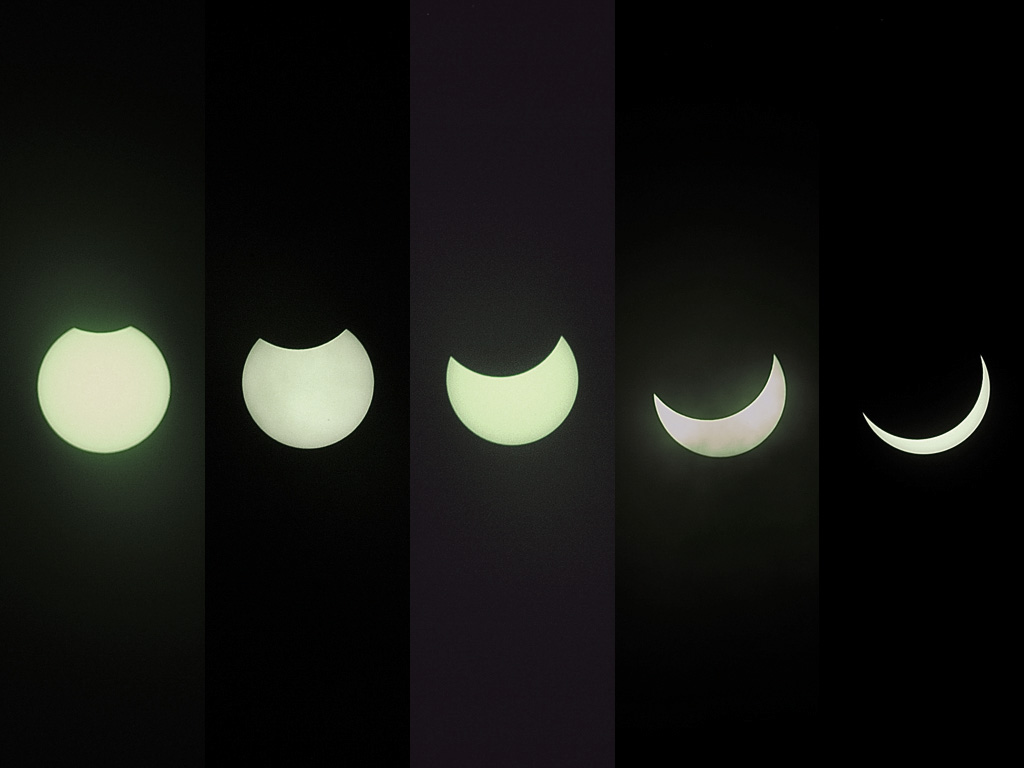
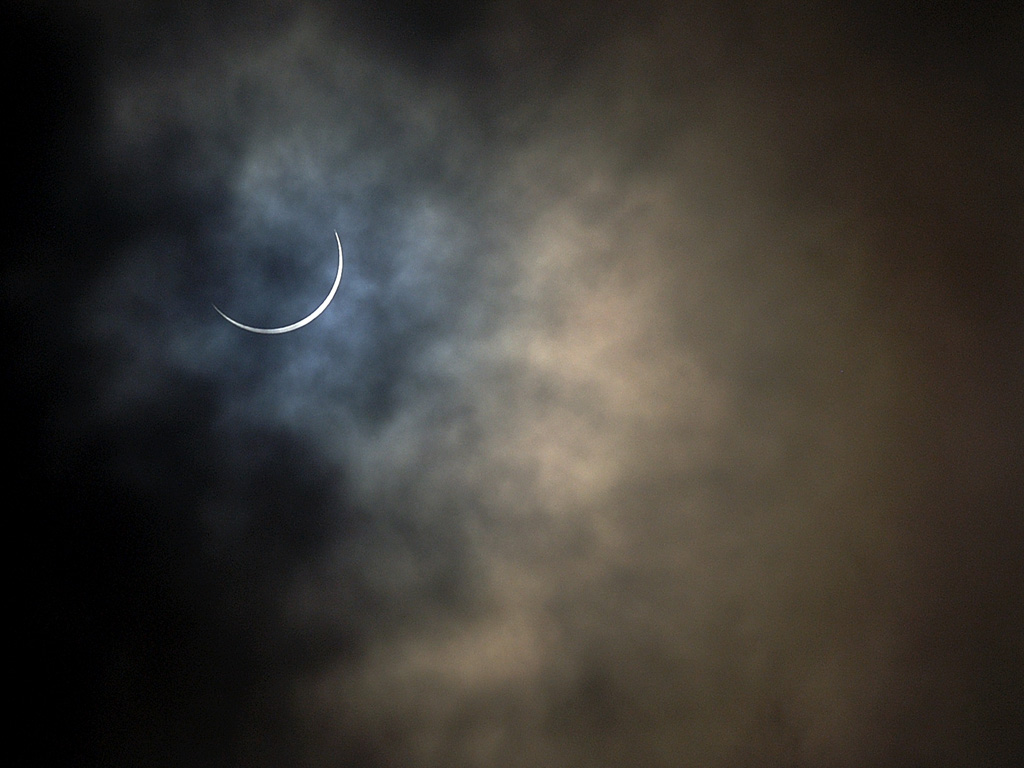
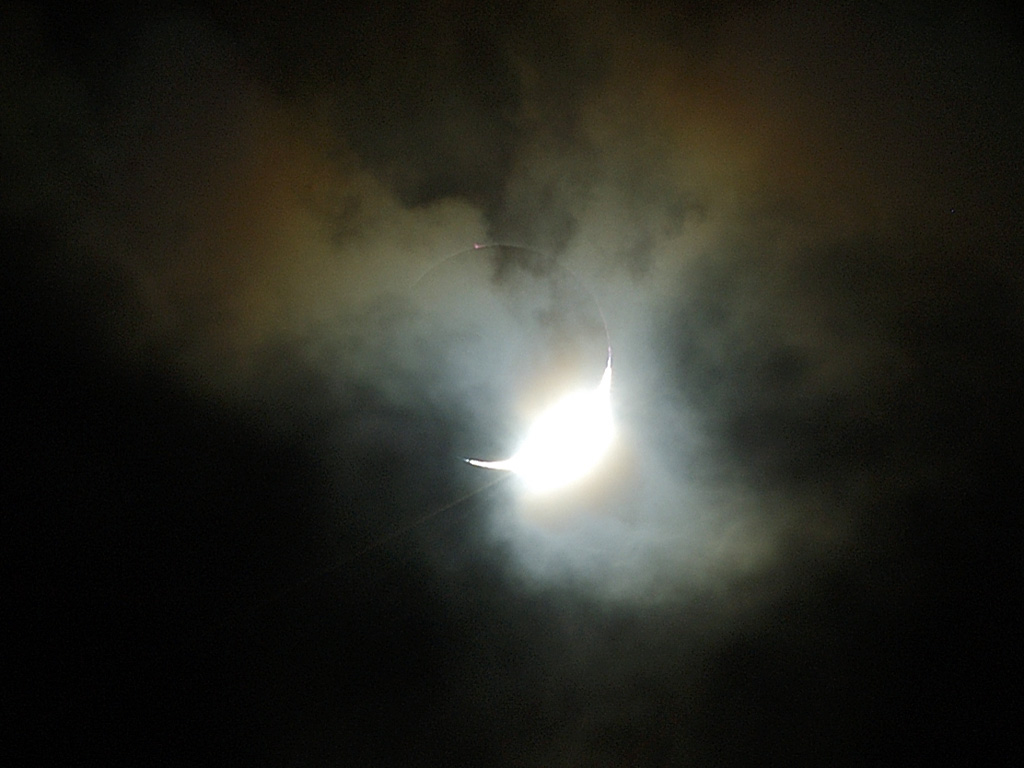
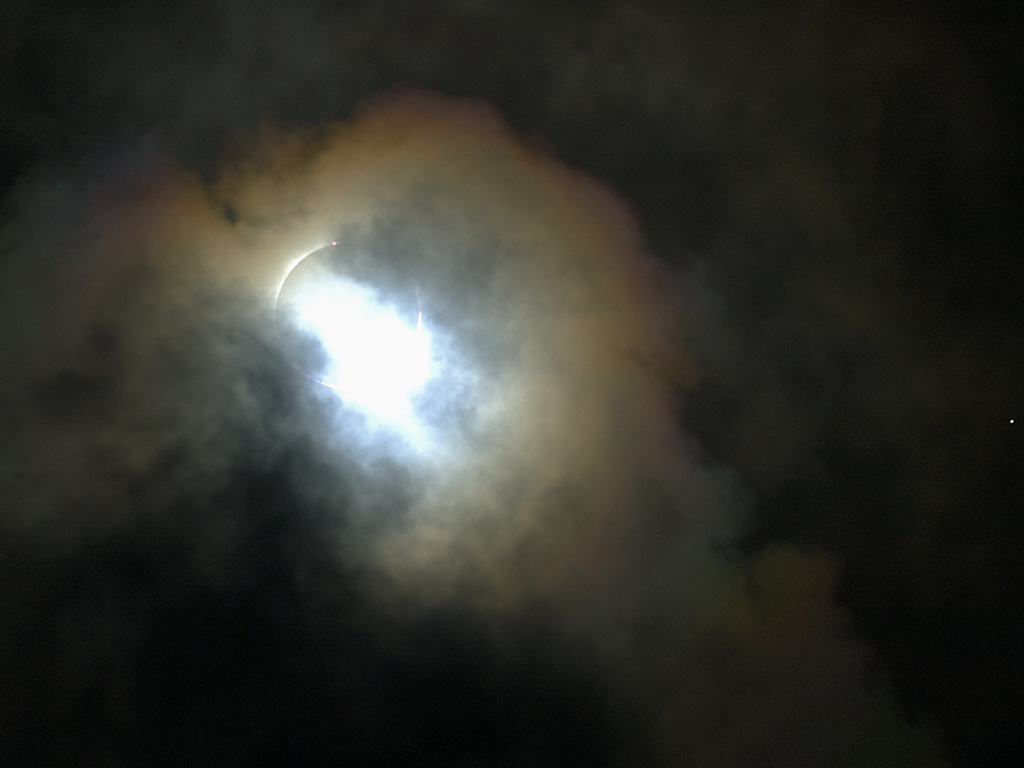
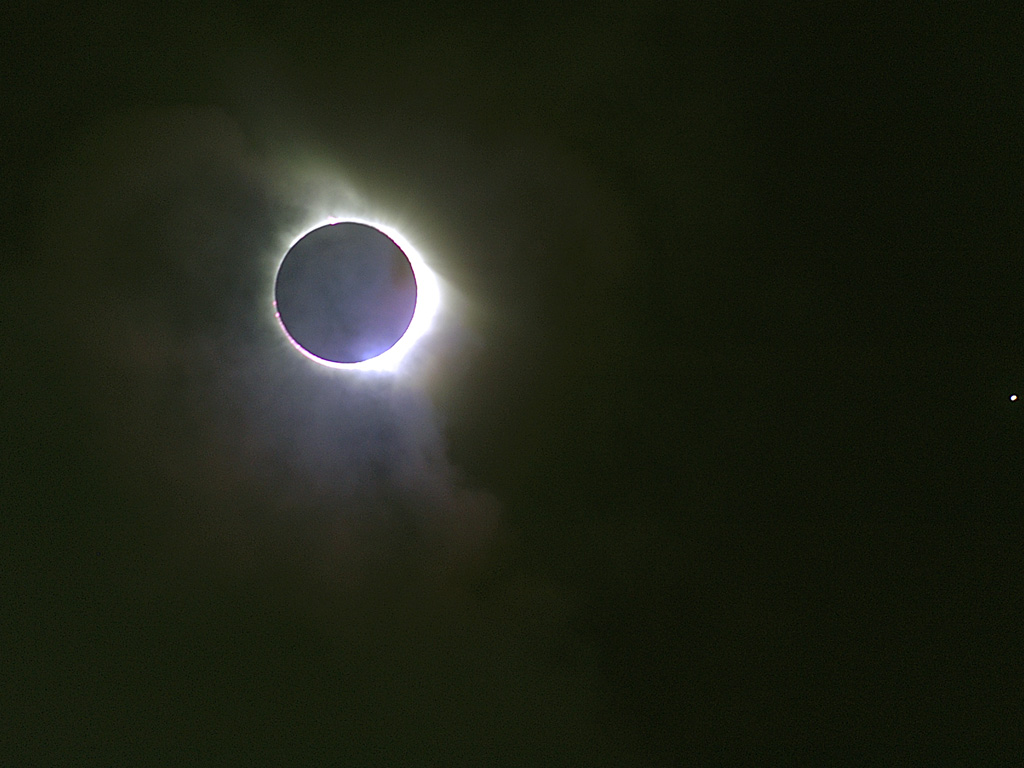
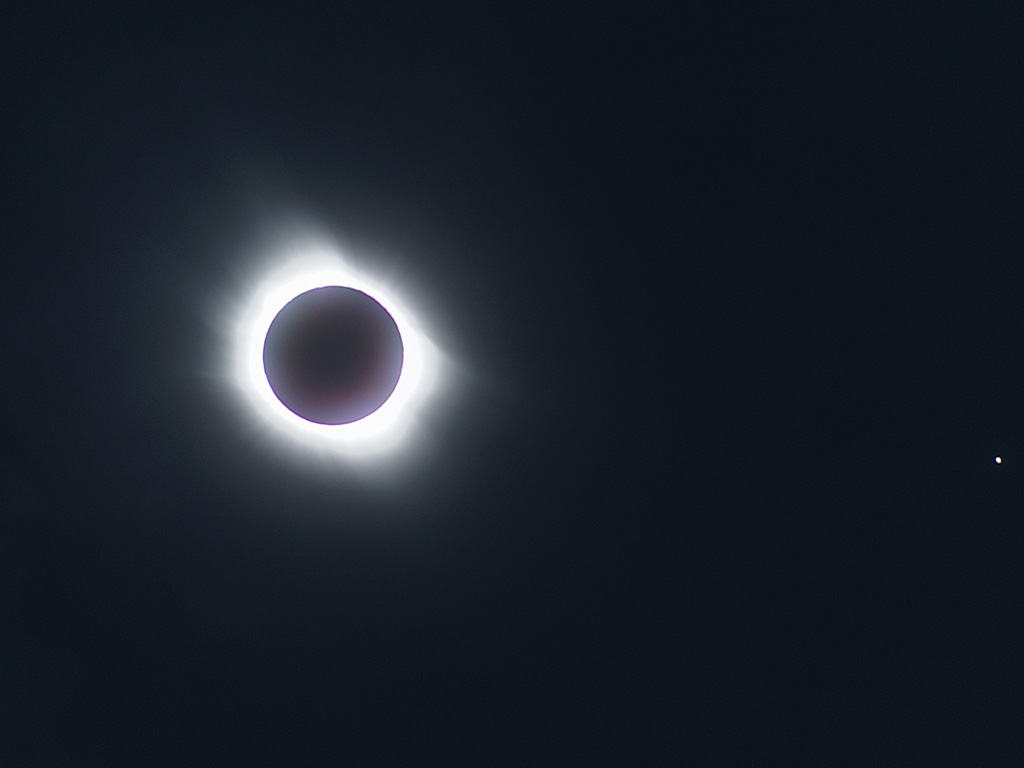
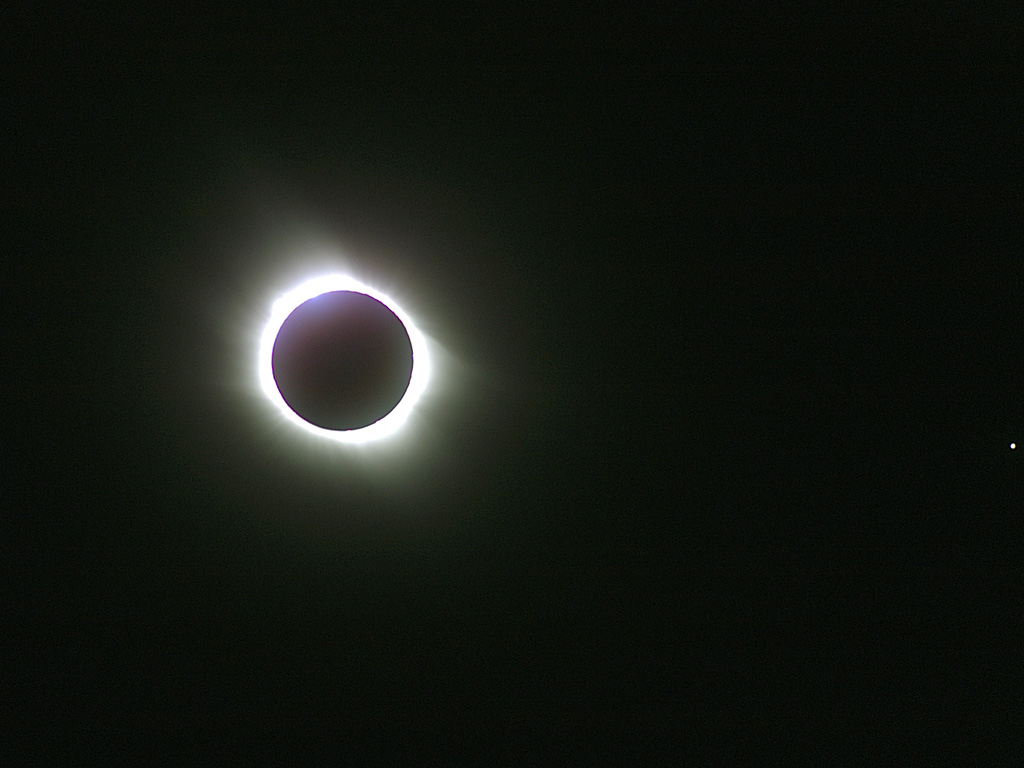

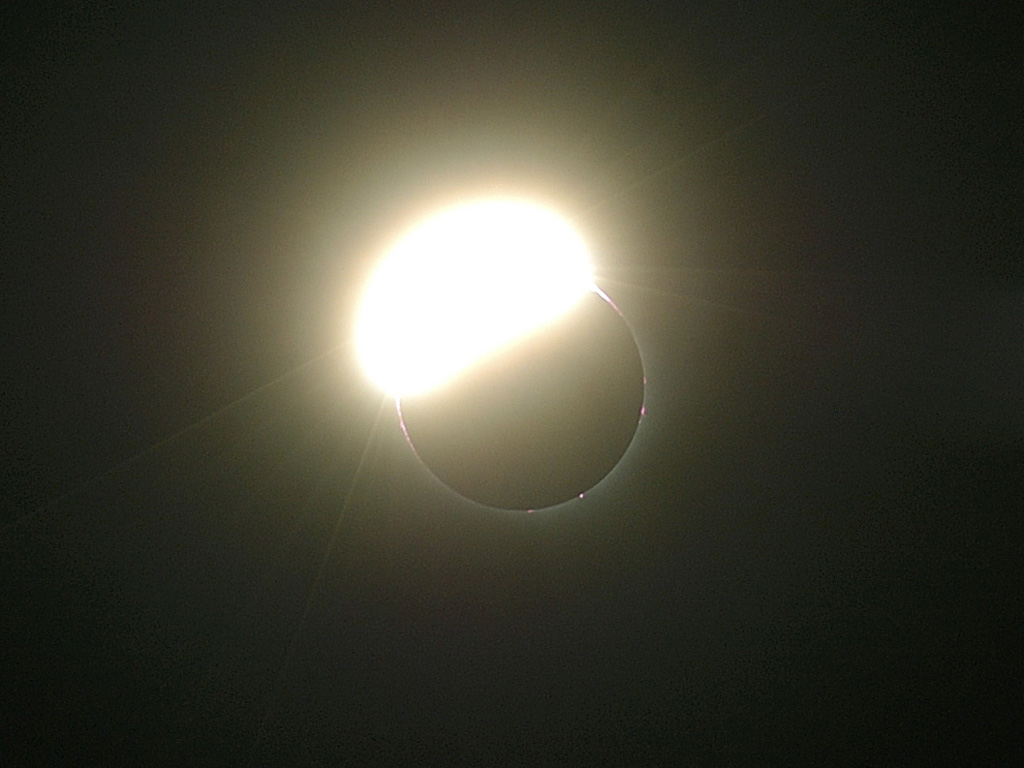
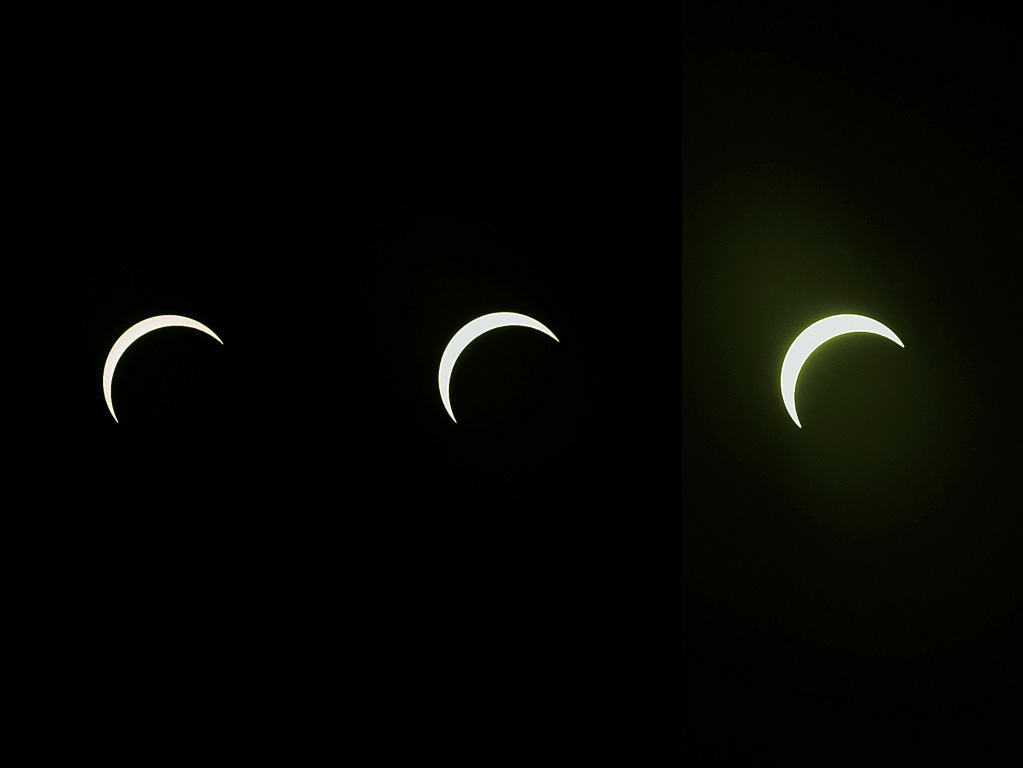
This
last picture by Jean-Luc is of the 'last moon' the day before the
eclipse.
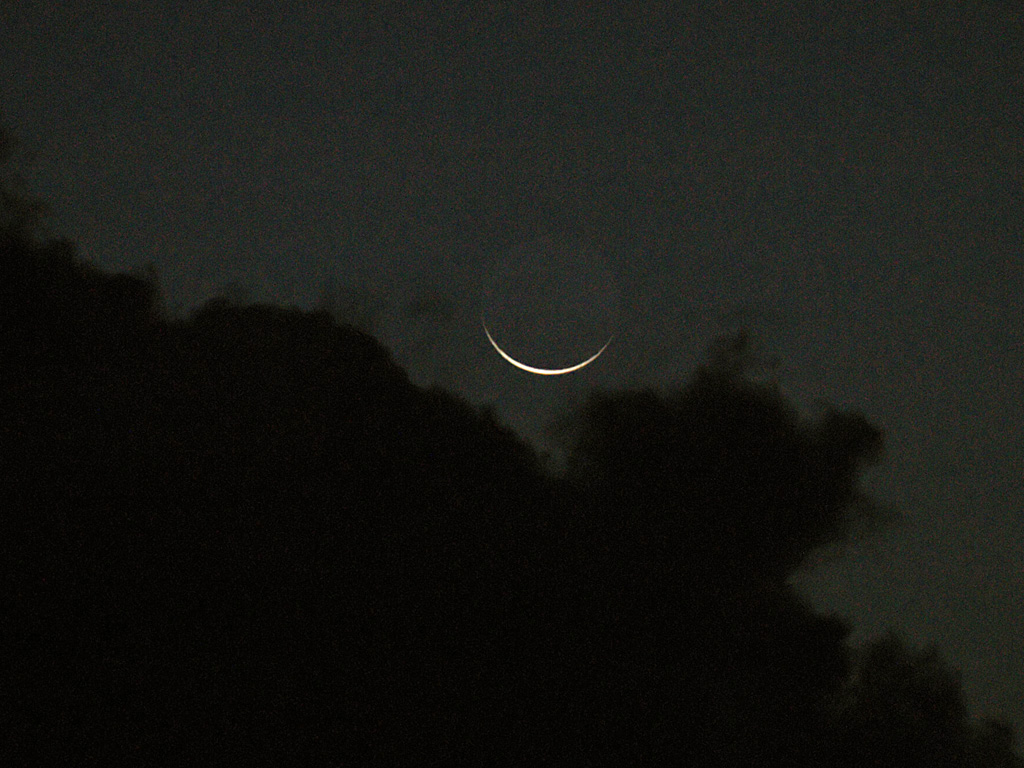
shot this
wide angle image (actually 40mm) with a Rollei box camera at about f/5
with shutter speed of 1/30 sec on
Fuji 200 print
film. The image
was then enlarged and printed at a darker density. Venus is clearly
visible below and to the right of the eclipse.
Matt also shot these close up images with a Celestron SS80 spotting
scope (f/5) acting as a 400mm telephoto at 1/1000 sec also on Fuji 200
print film. The images were enlarged, cropped and printed at
a
somewhat darker density.
Photos
by people in
the MWT Associates Paul
Gauguin
group are here.
Dennis Mammana was also on the Paul Gauguin
and has
eclipse photos on his site.
The
ship MV Discovery was
located at 129
deg 38.7' W
and 22 deg 37.2 S,
also in the path of totality. This picture and comments from Craig Prater, "These
images were taken 1 second apart using a Canon Digital Rebel at ~200 mm
focal length on a fixed tripod. The rocking motion of the ship caused
the center of the image to bob up and down from exposure to exposure.
So you can really appreciate any high mag telescopic images taken under
these conditions!"
Other
eclipse pictures can be
found at www.Spaceweather.com
I wish to thank all the photographers for their generous permission for
the use of their pictures. And I hope to see you all on a
future
eclipse adventure.
Other eclipses we have seen:
Greece
March 29, 2006
Mongolia
August 1, 2008
Here are links to places we visited on this tour. Tahiti, Pitcairn, Nuku Hiva, Hiva Oa, Fakarava, and Moorea.
And links photos of
the eclipse,
eclipse
photography,
tikis,
the ship,
young dancers,
food,
fish,
and
flowers
and trees we saw on the trip.
See
other places we have visited here.
Go
to our Personal
home page
Go to our Community
page
Go
to our Science
Fun page
E-mail
Nancy
and
Alan
